- Home
- >
- Preservation Archaeology Blog
- >
- Shoot, Grind, Chop, and Burn!
One of the most exciting components of Archaeology Southwest’s growing Hands-On Archaeology program is the inclusion of public activities specifically geared toward residents of southwest New Mexico’s Upper Gila area. This area is the focus of our Preservation Archaeology Field School, and some of our research and preservation projects are increasingly linked to this region. We are excited about opportunities to reach out to area residents and share what we are learning about archaeology there, especially the significance of the sites and landscapes that generations of private landowners have protected.
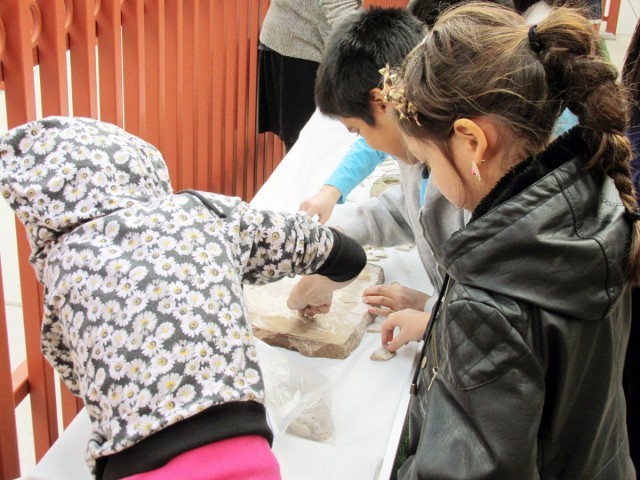
We recently returned from an intense three-day visit to the area, where we had the pleasure of sharing a free, Upper Gila focused Hands-On Archaeology program with about 250 people in the communities along Highway 180 between Mule Creek and Bayard, New Mexico. “Shoot, Grind, Chop, and Burn! The Archaeology of Making Dinner,” aimed at kids aged 5–12, emphasizes exploring and using the tools and techniques people used to make a meal in southwest New Mexico before A.D. 1400. After a brief introduction to our research in the Upper Gila and the different hands-on materials we’ve brought, kids dive right into using the replica tools Allen loves to make. As they use the tools, we have informal conversations about what they’re doing. For example, kids try grinding corn on a slab metate, a smaller basin metate, and a large mortar and pestle. Grinding with each tool helps them figure out which method is easiest to use and whether some tools produce finer flour, and why people might choose one tool over another in different situations.
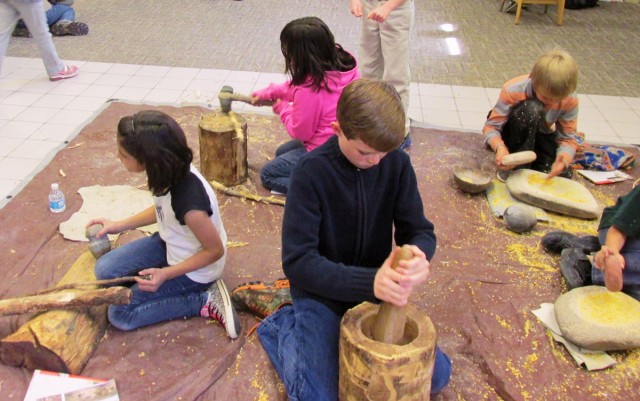
One of the fun things about doing this program in the Upper Gila is the familiarity local kids already have with these tools. Nearly all of the kids we talked with regularly see manos and metates, pottery, chipped stone flakes, and other artifacts on the ground around their homes. Watching stone flakes being struck off a core and then using flakes to whittle wood, cut a gourd open, or carve a bone into a tool helps them to more easily imagine the lives and activities of the ancient people whose artifacts are so visible in this area. Kids who mentioned chopping wood at home seemed especially drawn to the stone axes, replicas based on the ¾ grooved style common in the Upper Gila area. Stone axes are not very sharp, but these enthusiastic kids still chopped their way through our wood supply pretty quickly. Nobody quite managed to get a fire going with our fire-drills, though—a good thing, since that portion of our program often took place indoors!
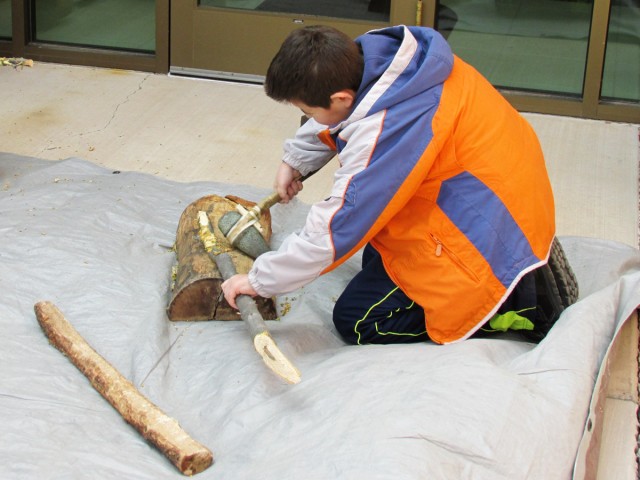
Another favorite activity was throwing rabbit sticks and atlatl darts. Many kids were surprised to learn how important the chore of protecting fields and gardens from marauding bunnies and ground squirrels was in the past—not just for the crops’ sakes, but for the more reliable source of meat these small animals provided in villages where local access to big game likely declined over time. Our rabbit sticks are made of oak branches harvested locally and modeled after ancient rabbit sticks found in local caves and shown in Mimbres painted bowls, making them a very tangible link to local archaeology. Students also enjoyed using atlatls. This was a new technology to many of them, but a handful of students had made their own atlatls at home and enjoyed showing off their skills.
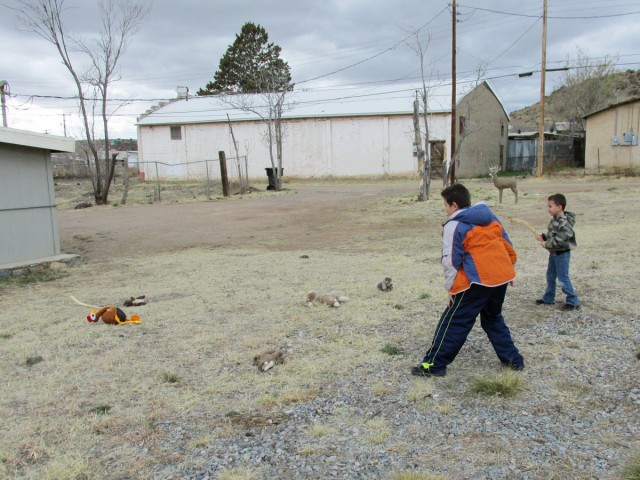
Our biggest crowd was at Cliff School, where students in kindergarten through 6th grade gave us a warm welcome as their classes took turns trying out the various activities. Our program at the Silver City Library drew another large and enthusiastic group of kids from several different elementary schools at once. Luckily for us, a group of teens from the Grant County Archaeology Society’s Junior Site Stewards program jumped right in to help talk to kids about all the activities, and ably ran the rabbit-stick-throwing event on the lawn outside. At the Bayard Public Library, a group of dedicated kids and adults braved cold winds and the threat of rain to hone their atlatl skills, and ended up with the best record of hitting our foam deer target.
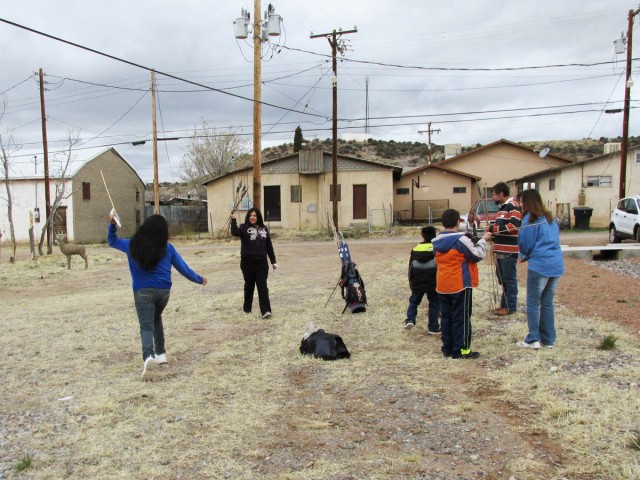 |
We really enjoyed meeting the many kids, parents, teachers, and librarians we talked with on this trip, and the interested “innocent bystander” adults who waded through crowds of children to try things out themselves and to ask questions. We hope we can keep in touch with some of them as our work in the region continues, and as we continue to share knowledge about the unique archaeology of the Upper Gila. Thanks especially to Madge Slavec and the Gila Valley Library; Corinne Smith and Cliff School; Harmony Phillips and the Silver City Library; and Sonia Dixon and the Bayard Public Library for all their help in setting up this lively series of public events.
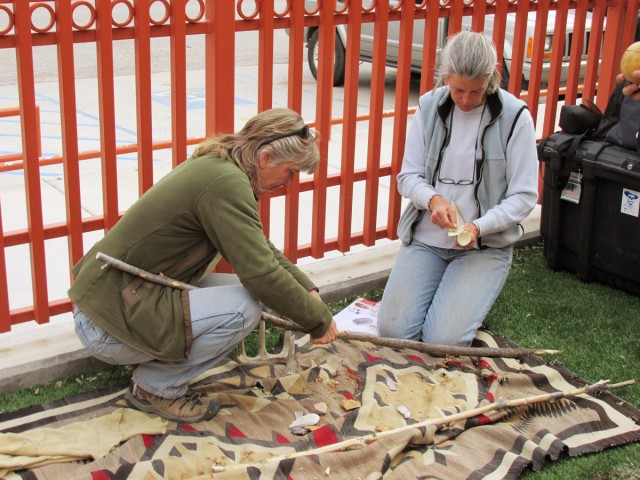
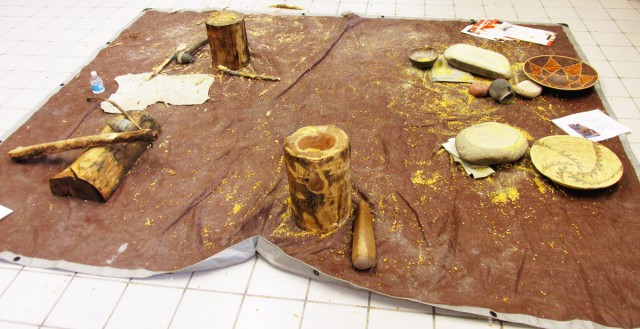
One thought on “Shoot, Grind, Chop, and Burn!”
Comments are closed.
Explore the News
Related to This
-
Project Hands-On Archaeology


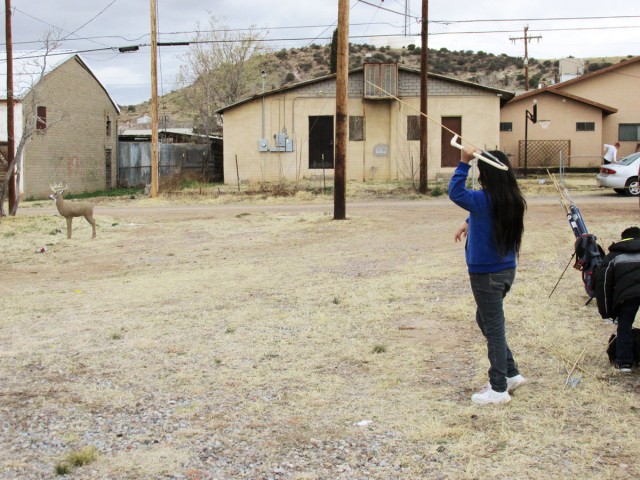
Blister, burn, smash, and bleed was a great success.